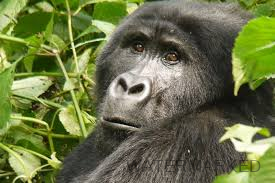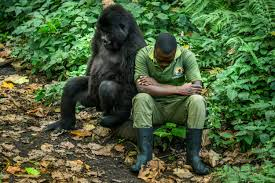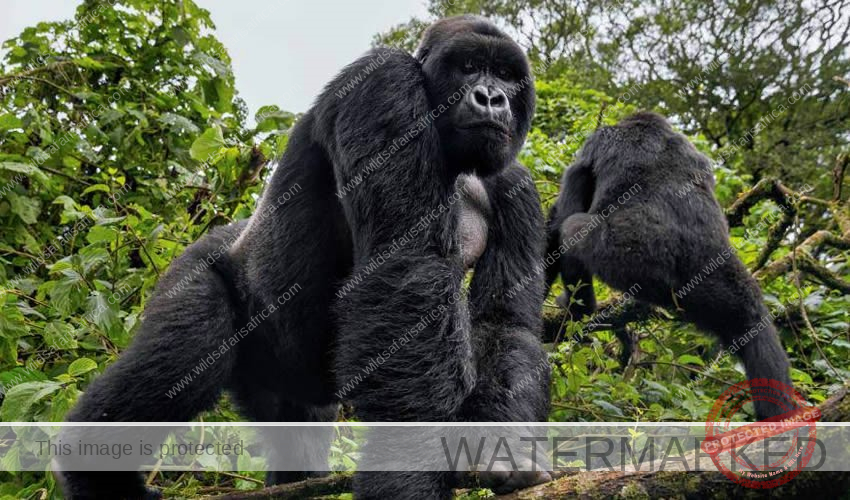
Gorillas are among the most impressive primates, showcasing remarkable traits that captivate both scientists and wildlife enthusiasts.
This article highlights key facts about gorillas, including their population, social structure, genetic relationship with humans, and the conservation challenges they face. Discover how these majestic creatures live, their unique behaviors, and how you can contribute to their protection.
1. Gorilla Population: A Critical Count
Currently, there are approximately 1,063 gorillas living in the wild. This number is alarmingly low, emphasizing the need for urgent conservation efforts. The populations of both Eastern and Western gorillas are critically endangered, with their numbers steadily declining due to various threats.
2. Isolated Groups: Unique Habitats
Gorillas inhabit two distinct isolated groups, each with its own unique challenges. The Eastern gorillas reside in the mountainous forests of Central Africa, while Western gorillas are found in the dense rainforests of the Congo Basin.


These isolated habitats contribute to the diversity of the gorilla populations but also make them more vulnerable to environmental changes and human activities.
3. Genetic Similarity: A Remarkable Connection
Humans and gorillas share approximately 98% of their DNA, underscoring our close genetic relationship. This similarity highlights the evolutionary connection between our species and the importance of conserving these primates as part of our shared biological heritage.


4. Size and Strength: The Giants of the Primate World
Gorillas are among the largest and most powerful living primates. Adult males, known as silverbacks, can weigh up to 200 kg (440 lbs) and stand over 1.8 meters (5.9 feet) tall.
Their impressive size and strength are matched by their gentle nature, making them both formidable and endearing.
5. Eating Habits: All-Day Grazers
Gorillas spend a significant portion of their day eating. Their diet primarily consists of leaves, stems, fruit, and flowers, with some individuals consuming up to 18 kg (40 lbs) of vegetation daily.

This continuous feeding is essential for maintaining their large bodies and supporting their energy needs.
6. Cozy Nights: Sleeping Habits
Each evening, gorillas create cozy nests to sleep in. These nests are carefully constructed from leaves and branches, providing comfort and protection as they rest. Gorillas are known for their nocturnal nesting habits, which contribute to their overall well-being and safety.


7. Vocal Communication: 16 Types of Calls
Gorillas are highly communicative, using a complex repertoire of around 16 different types of calls. These vocalizations serve various purposes, including social interaction, alerting others to danger, and coordinating group activities. Their vocal communication is a key aspect of their social structure.
8. Family Groups: Social Structure
Gorillas live in close-knit family groups led by a dominant male known as the silverback. This social structure includes females, their offspring, and sometimes other males. The family bonds within these groups are crucial for their social stability and survival.
9. Lifespan in the Wild: Over 40 Years
In their natural habitats, gorillas can live to over 40 years old. Their longevity is a testament to their adaptability and the importance of preserving their natural environments to ensure they reach their full lifespan.
10. Conservation Threats: A Call to Action
Gorillas face significant threats from habitat loss, poaching, and disease. The encroachment of human activities into their habitats and illegal hunting practices are major concerns. Conservation efforts are essential to protect these incredible animals and ensure their survival.

How to Help: Supporting Gorilla Conservation
You can play a vital role in gorilla conservation through the following actions:
- Donate to Conservation Organizations: Support organizations like the World Wildlife Fund (WWF) that are dedicated to gorilla protection and habitat preservation.
- Participate in Responsible Eco-Tourism: Visit gorilla habitats responsibly, ensuring that your presence supports local conservation efforts.
- Raise Awareness: Educate others about the importance of gorilla conservation and advocate for measures to protect their habitats.
Gorillas are remarkable creatures whose existence enriches our understanding of the natural world. By learning about their lives, habits, and the threats they face, we can better appreciate the need for conservation. Join the efforts to protect these majestic primates and ensure their survival for generations to come.
For more information on how you can help, visit the WWF’s gorilla conservation page.
FAQs About Gorillas
1. How many gorillas are left in the wild? Approximately 1,063 gorillas remain in the wild, making them critically endangered and in urgent need of conservation efforts.
2. How many different types of gorillas are there? There are two main species of gorillas: Eastern gorillas and Western gorillas. Each species is further divided into subspecies, including Mountain Gorillas, Eastern Lowland Gorillas, Western Lowland Gorillas, and Cross River Gorillas.
3. How similar are gorillas to humans? Gorillas share about 98% of their DNA with humans, highlighting our close genetic relationship and the importance of conserving these primates.
4. What do gorillas eat? Gorillas are herbivores, consuming a diet mainly of leaves, stems, fruit, and flowers. They can eat up to 18 kg (40 lbs) of vegetation daily.
5. How do gorillas sleep? Gorillas build cozy nests from leaves and branches each night to sleep in, ensuring comfort and protection.
6. How many types of calls do gorillas have? Gorillas use around 16 different types of calls for communication, which helps in social interaction and coordinating group activities.
7. How long can gorillas live in the wild? In the wild, gorillas can live to over 40 years old, demonstrating their adaptability and the importance of preserving their habitats.
8. What are the main threats to gorillas? The primary threats to gorillas include habitat loss, poaching, and disease. Conservation efforts are crucial to address these challenges and protect gorilla populations.



